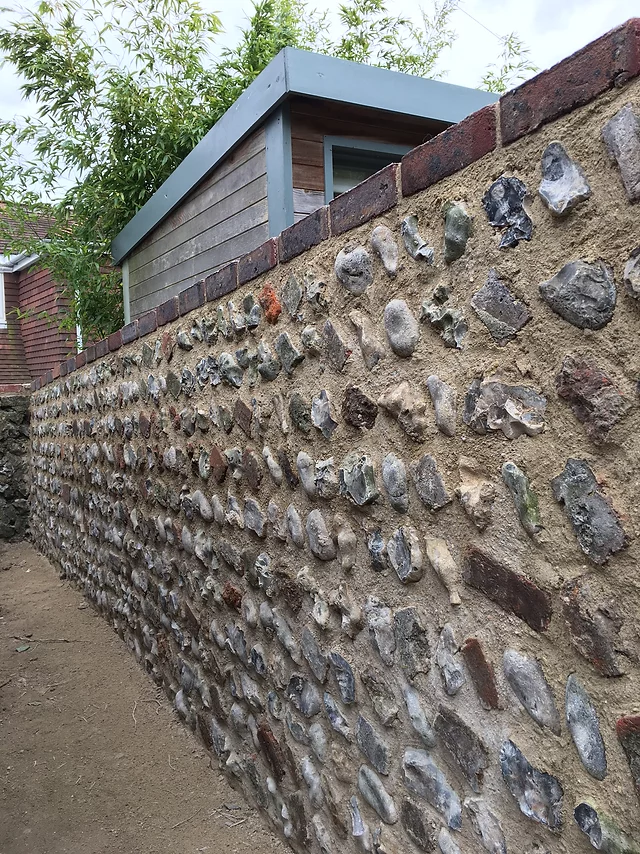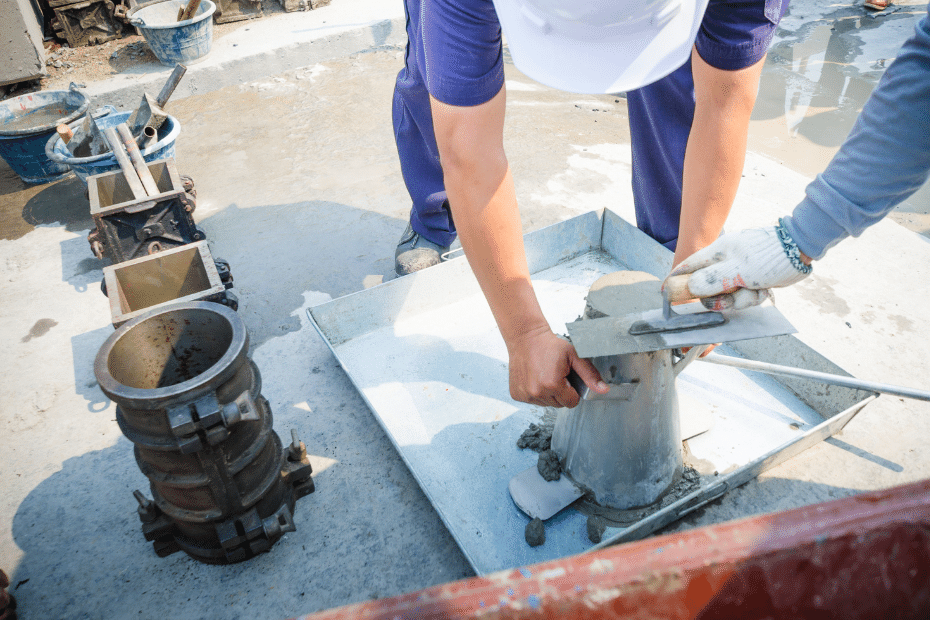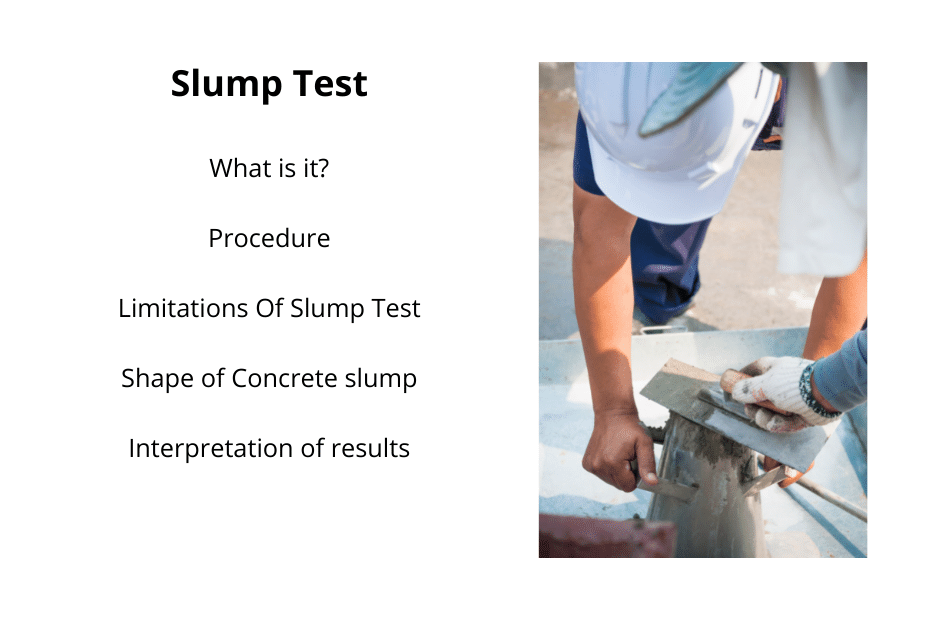A composite material known as bungaroosh (also spelled bungerouche or bungeroosh) is used in the construction industry. The spelling of bungaroosh has many variations, including bungeroosh, bungarouche, bungarooge, bunglarooge, bunglarouge and so on. As a wall construction material it pre-dates cement based concrete.
It is usually found in the areas of Brighton, Newhaven, and Seaford, and it can incorporate a variety of substances and materials from coastal locations, including some that are taken from the sea, as well as lime, gravel, coarse sand, flints, and occasionally bricks. It is most commonly found in the areas of Brighton, Newhaven, and Seaford. Although it is most often seen on the exteriors of buildings, we have also seen it employed on the interiors of basements and as separating walls inside buildings.
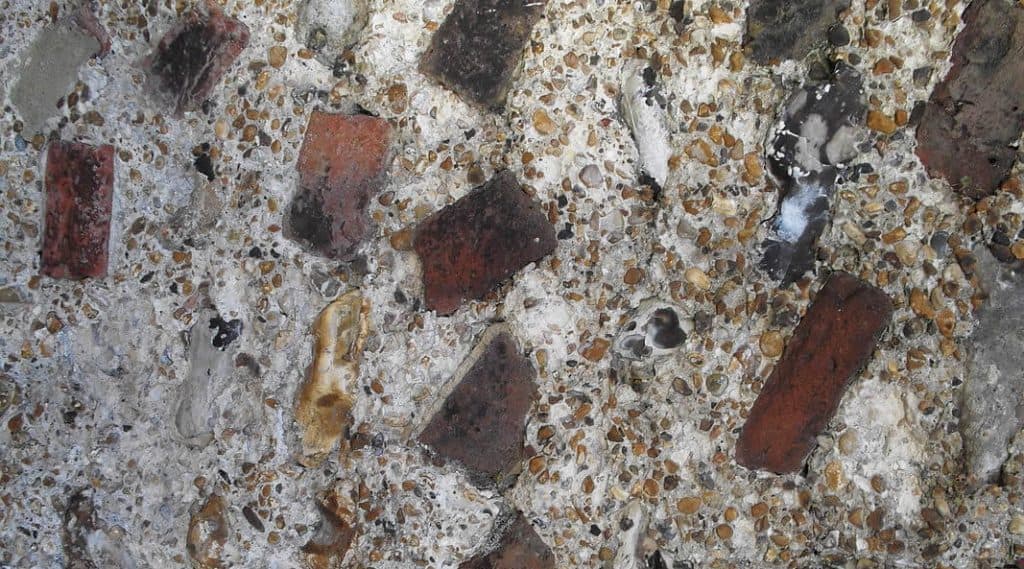
The word “bungaroosh” refers to a combination of items from several coastal areas. Walls were constructed with a foundation of clay and a mixture of limestone by using bricks, bits of crumbling cliff, cobble stones, flints, chalk, pebbles, or any other commodity that was readily accessible.
It should be noted that a protective render was applied to several of the buildings, particularly those that date back to the Edwardian and Victorian periods. This layer eventually breaks away with age, which causes the bungaroosh to become porous. Walls constructed with bungaroosh are not environmentally friendly in coastal areas due to the fact that many of their materials originate from the sea and the shoreline.
Rendering has been used to preserve these boundary walls throughout the years, which has allowed them to be seen often in Brighton, Kemptown, Newhaven, and Seaford.
When homeowners or builders uncover the render, they will notice this bungaroosh mess and believe it is a bodge job by a local builder. However, it is really a construction technique that is how many of these walls were made in the late 17th and mid-18th centuries.
Where Bungaroosh is found?
Walls made from bungaroush are almost exclusively found in the English seaside towns of Brighton (particularly in the Kempton neighbourhood) and Hove, where it was a popular product during the 18th and 19th centuries. Many Regency homes in Brighton and Hove that do not have brick walls feature bungaroush masonry. It may have been popular during this time due to the availability of discarded bricks and the affordability of flint from the South Downs around Brighton.
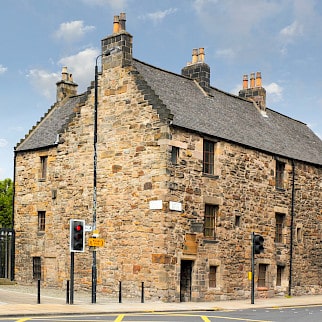
It was considered quick, easy, strong and cheap, and was most commonly used for garden walls or rear walls – normally protected with external stucco or plaster to prevent erosion. A galetted finish made from residual flakes of stone can also be used to fill spaces and help prevent erosion.
What are Some of the Issues Concerning Bungaroosh?
Bungaroosh construction may give rise to a wide variety of complications for the structures it underpins. It is not as robust as the majority of other building materials, and properties made from it have an elevated incidence of just about every structural issue you can possibly conceive. It is also more expensive than most other construction materials. Bungaroosh is not very water resistant however; water can readily seep through the walls, which may lead to persistent issues with moisture. In certain instances–for instance, if the walls get oversaturated with water–elements of the bungaroosh might disintegrate and migrate, therefore weakening the structural integrity of the structure. This can occur in a number of different ways.
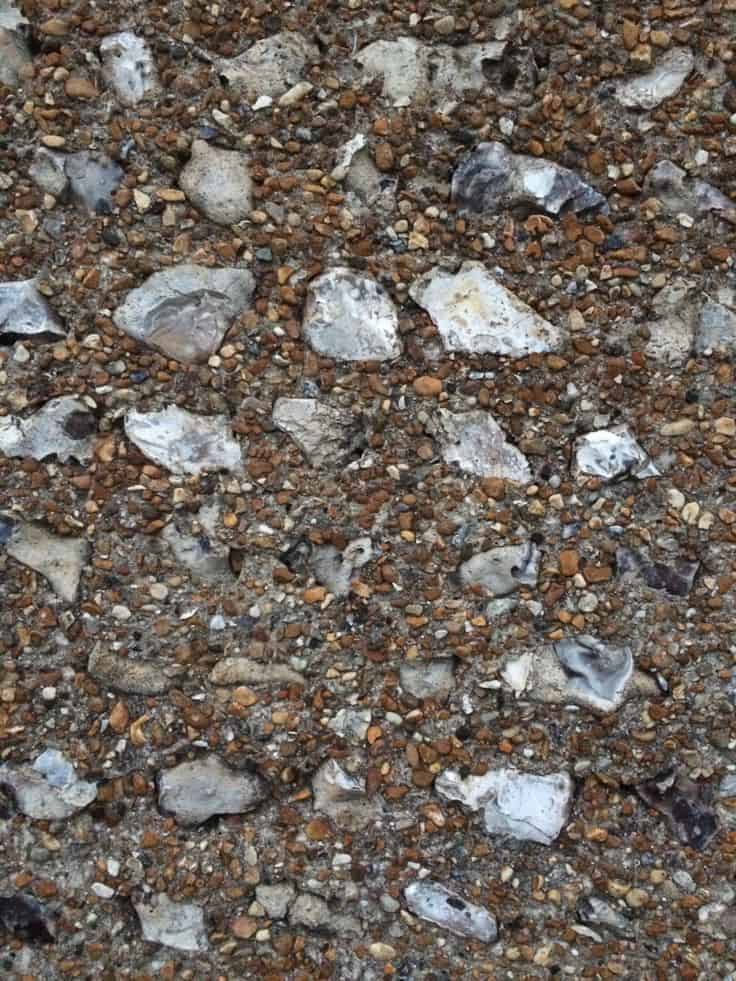
In homes that were constructed using bungaroosh, it is of the utmost importance to cut down on the number of instances in which penetrating damp might take place. On the other side, there is a possibility that the walls may fall apart if the bungaroosh dries out to the point where it is excessively dry. Imagine how difficult it must be to attach things like shelves or portraits to surfaces made of bungaroosh, considering all of these constraints. When everything is taken into account, it’s not the best construction material for a home, and the fact that so many bungaroosh properties are still standing is the true surprise here.
How Bungaroosh collapses?
Bungaroosh walls have the potential to become fragile and fall down. This may be attributed to a variety of factors, including inadequate lime content, low-quality building materials, and particle erosion brought on by pebbles and sand from the beach that have been contaminated with salt. It is possible for water to enter behind the cement rendered face of the wall, so removing the surface of the wall that is trapped. Repairs that are not done correctly, such as utilising the wrong materials like contemporary cements, may potentially contribute to the structure collapsing. Another cause of collapse is bad construction.

Bungaroosh is susceptible to damage from the effects of water and heat, much like other construction systems. As a consequence of this, the material will contract and expand, which may cause issues for the layer of render that serves as a protective barrier. However, there are professional surveyors, skilled masonry contractors, and experienced bricklayers that can fix your bungaroosh difficulties.
Bungaroosh repair
Bungaroosh is a substance that is soft, therefore it does not bond together very well, and as a result, fractures often occur in it. Because it is difficult to deal with the material at the borders, brickwork is often used in areas such as around windows, doors, and other similar features.

In the beginning, the builders first placed lumber into the wall of the bungaroosh so that it would be more sturdy. In addition, the lumber served as a support for fittings and accessories that had to be hung from the wall.
Utilizing items that are based on cement is, in my view, the most unwise course of action. It iss often seen in cases in which repairs have been made to bungaroosh in which the contractor has, in all honesty, mistakenly believed that a good, firm render mix would help reinforce the wall and halt future cracking. As was just said, the difficulty is that a hard cement-based mix violates the golden rule of rendering, which states that the render should always be weaker than the substrate over which it is applied. Cement-based repairs have been known to detach themselves from the wall all too often in my experience, rendering them completely useless.
In light of this, I am of the opinion that the only way to fix a wall made of bungaroosh is with more bungaroosh. Because of this, you will need to hire a professional contractor who is capable of duplicating the product by using the same kinds of materials and methods that were utilised in the initial production.
In the event that the fracture poses a threat to the building’s integrity, you should see an expert. In the past, I have replicated the wood that was used in the initial construction by installing concrete lintels over the crack and using an expanding grout to guarantee that the lintel fits tightly inside the wall. This method was successful in producing an exact reproduction of the timber that was utilised.
The most important thing to remember after reading this article is that if you want to fix a bungaroosh wall, you should never use products based on cement. Instead, you should make an effort to fix the wall using the original materials and methods.
